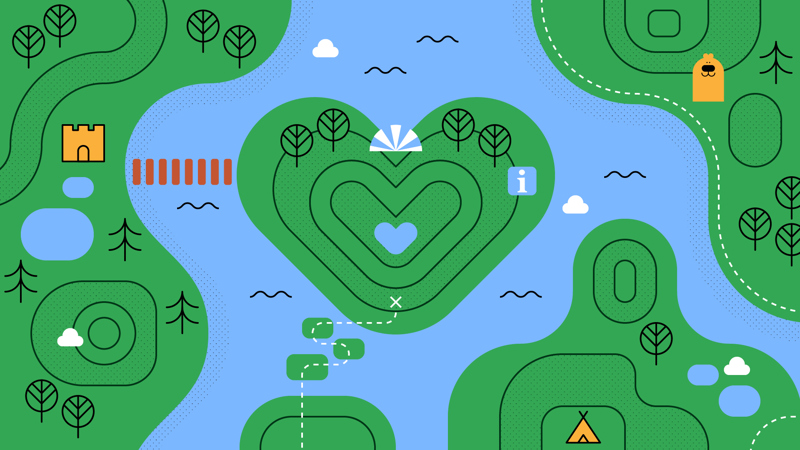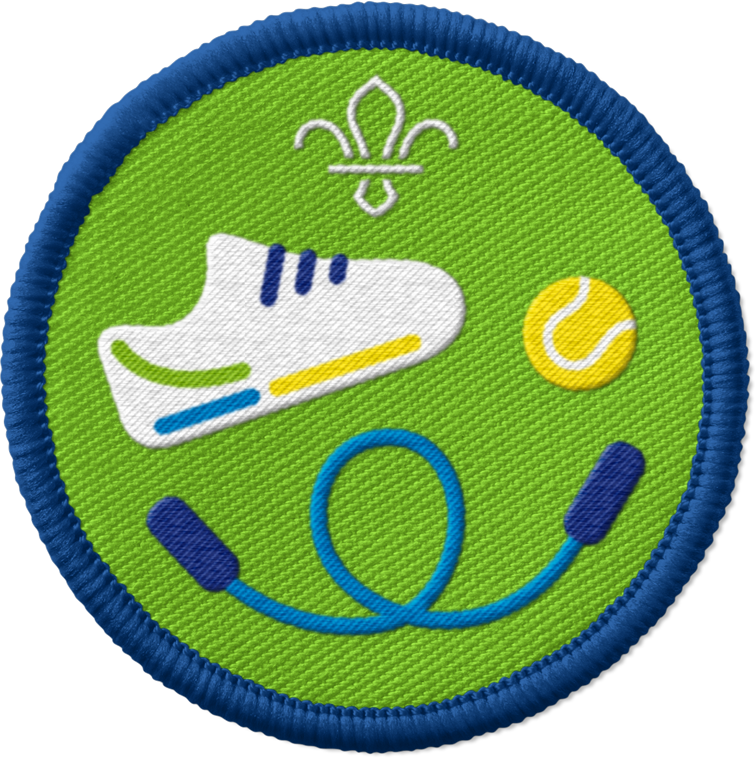
My heart in the hills
You’ll need
- Pens or pencils
- A4 paper
- Ordnance Survey maps
- Hiking kit right for the weather and route
Before you begin
- This activity can be done as part of a camp, an overnight stay or as a weekend activity in your area.
- Plan out the route carefully in advance, completing the appropriate safety and accessibility checks.
- Make sure everyone has weather-ready kit that’s suitable for the hike.
- Make sure everyone has some water to stay hydrated.
Everyone could put some fruit slices in their water to add some flavour. Lemons and oranges make a great alternative to squash, and are also really healthy!
- Remember: if you’re planning a route that takes in any hills over 500m above sea level, you’ll need a permit. For more guidance, see the A-Z activities Hillwalking.
Get ready
- Separate into small groups. Each group should have an adult or younger person to assist with map reading and route planning.
- The person leading the activity should give each group an Ordnance Survey map and lay them out flat so everyone can see.
- This hike will include at least one hill; each group should try to spot them on the map.
On a map, hills are shown by contour lines – the closer they are, the steeper the hill. Their height and gradient are also marked.
- The person leading the activity should show everyone the exact route and point out any hills.
Head into the hills
- When the group arrives at the base of the hill, everyone should stop and take their resting pulse.
Sit or stand in a relaxed way and use your first and middle fingers together to find the pulse on the inside of your wrist, just below your thumb. To get your resting heart rate, count the number of beats you feel in 10 seconds and multiply it by six. Remember that everyone’s will be different.
- Everyone should jot down their resting heart rate on paper.
- Head off on the hike once everyone’s ready.
- When everyone’s done some moderate exercise, they should stop to take their pulse again. Their heart rate should have increased – they should record it on their piece of paper.
Remember to take your pulse fairly quickly before it’s had a chance to recover.
- Everyone should try to notice any other changes in their body as they are exercising.
They might feel out of breath, hot, or slightly sweaty, and their leg muscles might be getting a workout.
- Continue to the summit of the hill. Once there, everyone should immediately take their pulse again. Everyone’s heart rates should increase with a final burst of exercise.
If the hike requires a permit, the summit might include a scramble; but, if the ground is level, challenge the group to sprint to the top or walk faster.
- Everyone should rest and enjoy the view. They could explore the summit.
- Everyone should take their pulse again and see if it’s returned to normal resting rate.
People should think about other changes too. Anyone who got hot on the climb might start cooling down, so should put on some extra layers and drink water.
- Everyone should get ready to continue with the hike or head back down the hill.
Reflection
This activity was a chance for everyone to see how physical activity affected their bodies. Everyone should look back at their heart rates and compare them at the base of the hill, after some climbing, and at the top – they should have increased as the exercise became more strenuous. The group should also think about the other changes in their bodies as they hiked, including which muscles they used as they climbed. They probably felt the back of their legs (hamstrings and calves) working harder, noticed their breath was heavier and faster, and that they felt hotter too. These are all signs the heart is working to pump blood around the body, helping them feel healthier and fitter.
What did everyone enjoy about the hike? How did it feel when they reached the top? What was their favourite experience? Was it the glorious view from the top or the wildlife you spotted? Well done for becoming more adventurous and ready for new challenges.
Safety
All activities must be safely managed. You must complete a thorough risk assessment and take appropriate steps to reduce risk. Use the safety checklist to help you plan and risk assess your activity. Always get approval for the activity, and have suitable supervision and an InTouch process.
- Hiking and walking
Follow the guidance for activities in Terrain Zero, or the guidance for each the adventurous activity.
Add in extra physical challenges along the route to really test fitness. These could include running in short bursts, from tree to tree or on all fours (bear crawl).
Before the hike, check the route is accessible for everyone.
All Scout activities should be inclusive and accessible.
Pack a homemade healthy snack or sandwich to fuel your hike. This could count towards your Health and Fitness Activity Badge.
Encourage young people to make the hike their own by choosing and leading exercises along the way.


